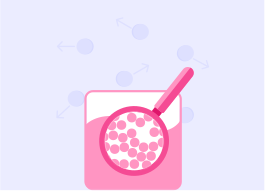the-particle-model
The molecular structure of matter tells us lots about the states it can be in, namely solid, liquid or gas. These states are governed by the temperature and motion of the particles that make up matter.

Particle Model

Forces and Distance Between Models

Temperature and Effect on Motion of Molecules

Pressure and Effect on Motion of Molecules

Calculating Change in Pressure/Volume

Brownian Motion
Changes of state occur when the particles of a substance gain or lose energy, leading to thermal expansion or contraction. The specific heat capacity of a substance is the amount of energy required to raise the temperature of 1 Kg of a substance by 1 degree Celsius.
Changes of state are physical reversible changes that occur when a substance is heated/cooled to the point where the bonds break/reform. The specific latent heat of a substance is the amount of energy needed to change 1 Kg of a substance from one state to another, without changing its temperature. We can model the change in temperature and the changes of state over time with heating and cooling curves.


